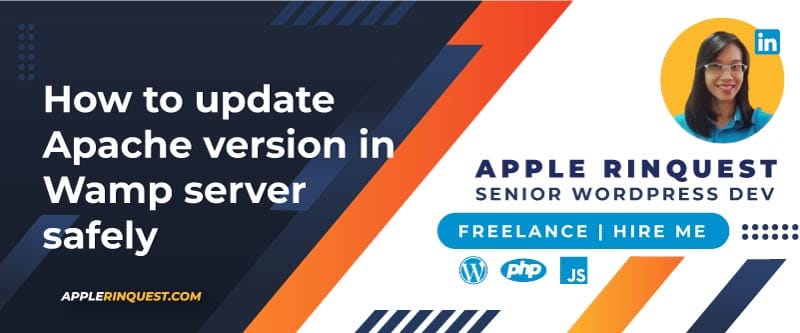Your support helps keep this blog running! Secure payments via Paypal and Stripe.
If you’ve ever checked your Yii2 application logs and found this message:
yii\web\BadRequestHttpException: Unable to verify your data submission.
You might wonder whether your app is under attack or if something broke internally. Let’s decode what this error means, why it appears, and how to handle it properly.
What the Error Means
The message “Unable to verify your data submission” comes from Yii2’s CSRF (Cross-Site Request Forgery) protection system.
CSRF validation is a built-in security feature that ensures every form or POST request originates from your own website — not from an external or malicious source.
Whenever a user submits a form, Yii2 includes a hidden token (CSRF token). This token must match the one stored in the user’s session. If it doesn’t match or if it’s missing, Yii2 immediately blocks the request and throws a BadRequestHttpException.
In short:
Yii2 is protecting your site by rejecting requests that can’t be verified.
Real Example from the Log
Here’s a real-world snippet you might see in your runtime/logs/app.log:
yii\web\BadRequestHttpException: Unable to verify your data submission. in
/vendor/yiisoft/yii2/web/Controller.php:221
With the following POST data:
$_POST = [
'd2' => '==QXisTKo8mZulGcoBnIsIiIsIibvlGdj5Wdm9VZ0FWZyNmIsIyYuVnZfJXZzV3XsxWYjJyW',
'PLURL' => 'http://newscan.oss-cn-hongkong.aliyuncs.com/code/1.txt'
]
That data doesn’t belong to your app. It’s a bot trying to inject or upload something. Yii2 rejected it because the request lacked a valid CSRF token. In this case, the error is a good thing: your CSRF defense worked.
Why This Happens Frequently
Modern web servers, especially public ones, are constantly scanned by bots looking for:
- Common login or upload endpoints (
/login,/upload,/api, etc.) - Vulnerable CMS or plugin routes
- Forms that accept POST data without verification
These bots don’t care what framework you use. They send random data to thousands of URLs every hour. When they reach your Yii2 app, the invalid POST is detected and blocked.
How to Confirm It’s Not a Bug
If you’re unsure whether the error came from a legitimate user or a bot:
- Check the IP (
REMOTE_ADDR): suspicious if from unfamiliar foreign addresses. - Look at the POST data: encoded or external URLs often indicate automated attacks.
- Review your access logs: if the same IP hits multiple endpoints quickly, it’s a scanner.
If your real users occasionally see this error, it can happen when:
- Their session expired before submitting a form.
- They submitted the same form twice.
- JavaScript dynamically removed the CSRF token from the request.
These are normal edge cases and can be handled gracefully.
How to Prevent Legitimate CSRF Errors
- Keep CSRF validation enabled (never disable it):
'request' => [ 'cookieValidationKey' => 'your-secret-key', 'enableCsrfValidation' => true, ], - Ensure every form includes the CSRF token
Yii2’sActiveFormadds it automatically:<?php $form = ActiveForm::begin(); ?> - Avoid caching full pages that include tokens, especially with CDN or LiteSpeed caching.
- Regenerate CSRF tokens only on logout or session reset.
How to Reduce Bot Noise
If you get constant logs like this, consider adding light-hardening measures:
- Rename common routes like
/login→/something-not-generic
(makes generic scanners miss your endpoints). - Add Google reCAPTCHA to login and signup forms. Bots can’t bypass it easily.
- Use a Web Application Firewall (WAF) like Cloudflare, ModSecurity, or LiteSpeed’s built-in rules.
These automatically block repetitive POSTs. - Log suspicious requests separately so your
app.logstays clean.
Example of a Hardened Setup
- CSRF validation: ✅ On
- Pretty URL:
/something-not-genericinstead of/login - Google reCAPTCHA v3: ✅ Enabled
- HTTPS: ✅ Enabled
- Rate limiting: ✅ via LiteSpeed or Cloudflare
With these layers combined, you’ll stop both generic bot traffic and targeted brute-force attempts — while keeping your error logs tidy and informative.
Summary
The “Unable to verify your data submission” error in Yii2 isn’t a failure — it’s proof that your CSRF protection is working.
It usually appears when a POST request arrives without a valid CSRF token, often from automated bots probing your site for vulnerabilities.
Most of the time, there’s nothing to fix. However, if real users experience the issue, review session expiration, token handling, and caching rules.
Your support helps keep this blog running! Secure payments via Paypal and Stripe.









